The only Briton to have made it to the summit of the world’s 14 highest mountains is close to realising a long-term project: a photographic account of all his 8,000m ascents.
Alan Hinkes topped out on his final 8,000er eight years ago but only now has he completed this labour of love.
The luxurious coffee-table book is a departure for Cumbrian publisher Cicerone, more accustomed to putting together its huge range of guidebooks for outdoor pursuits, but Hinkes specifically wanted the Milnthorpe company to handle his oeuvre.
Sarah Spencer said many will be surprised at the superb quality of Hinkes’s images, but the North Yorkshire mountaineer said he was a photographer before he was a climber.
Speaking to grough at a trade show just up the road from Cicerone’s base, he said: “I’ve been a photographer since I was 10 or 11 and when I was a teenager I processed my own black and white and then I moved into transparencies.
“I’ve always been a photographer taking pictures. When I go on an expedition I would sometimes take 100 rolls of 36-exposure tranny film.
“And on a climb, I would carry several rolls of film and my mate would say: ‘Why are you carrying all that extra weight’ so I did take a lot of pictures and it was not easy with slide film.
“You didn’t know what you’d got until you came back and processed it.
“Nowadays everyone thinks they can take photos, but it is amazing how much things have changed with digital.”
He explained few of the images in the book, 8000 Metres – Climbing the World’s Highest Mountains, are modern digital photos.
“Most of these pictures you see in the book were taken on slide and they have been fantastically scanned in Leeds, in Yorkshire, and now I have moved on to digi like everyone else.
“You could say it’s easier. Instead of taking a hundred rolls of film to the Himalaya, which would be boiled in the day in the heat; frozen at night; and then x-rayed.Aand 100 rolls is virtually a daysack-ful.
“Nowadays you just take a memory card the size of a thumbnail and you get thousands of shots and you can x-ray it till the cows come home.”
The fact the images, all from his ascents of the world’s 8,000m mountains, are analogue images is partly the reason for the delay in getting the book out.
Hinkes said: “It was a big task sifting through literally scores if not getting up to 100,000 images because there were 27 expeds to the 8,000ers and all told, I’ve had nearly 60 expeditions so that is a lot of images.”
Another reason the project is only now coming to fruition is his liking for ‘playing out’.
“This has been a long time in the making, in that I’ve put it off and I’ve written bits of it then I’ve run out of superglue by which I mean I needed superglue to glue me to the chair to get it done, but I didn’t. I went out to play.
“So it has been a labour of love and it has been fantastic that Cicerone have been so understanding. Jonathan and Lesley and all the staff at the company have been massively understanding of me putting it off then doing it again and rewriting it.
“It has taken a while but I’ve had to sift through scores of thousands of transparencies to find the images and then write the stories up as well.
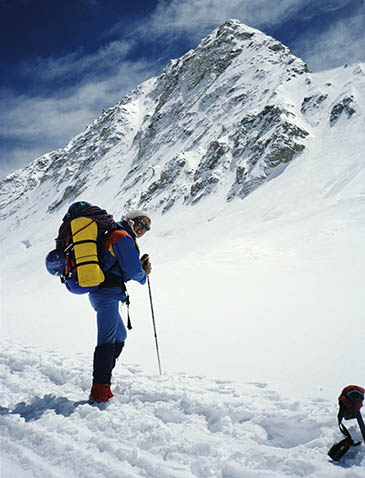
Alan Hinkes on Shishapangma: "At 6800m, carrying a huge rucksack that weighs over 20kg. I am moving up to the final bivouac, ready for an Alpine-style first ascent of the Central Couloir on the North Face. The line of the route is visible behind. My head is covered to prevent sunburn." ©Alan Hinkes
“I hope people think that the words are good and certainly the pictures are good.”
Modesty is not one of Mr Hinkes’s flaws.
The book could be described as a photo essay of his unique British achievement. “Essentially you could say it’s 14 chapters: one for each mountain; a couple of thousand words for each chapter so each chapter would stand up on its own,” he explained.
“But there are 16 chapters because there is an intro and an aftermath and a fantastic foreword from Brian Blessed.
“There are a dozen pictures per chapter or something like that.”
His record mountaineering tally began in the 80s and he originally had no intention of chasing all 14 peaks.
“The first 8,000er was Shishapangma in 1987 with the great Polish mountaineer Jerzy Kukuczka and Artur Hajzer. Sadly, both of them are dead now,” Hinkes said.
“I did a new route on Shishapangma and learnt a lot about how to survive at 8,000m and how not to get frostbite.
“The final one was Kanchenjunga, the third highest mountain in the world and fortuitously or almost by coincidence when I climbed Kanchenjunga it was the 50th anniversary of the first ascent by Joe Brown, one of my mountaineering heroes.”
Some commentators have cast doubt on one of Hinkes’s 1990 ascent of Cho Oyu. The straight-talking Yorkshireman shrugged off the suggestion.
“There is no controversy as far as I’m concerned,” he said. “I’ve done them all and you can read the book.
“If people don’t want to believe it, that’s up to them.”
A more bizarre incident put paid to one attempt in Pakistan. It’s one that brought him the sobriquet of the Chapatti Man. He said it’s in the book.
“The chapatti incident is mentioned as well. That was on Nanga Parbat when I did sneeze on some burnt flour on a chapatti. It’s amazing how people remember that because that was 15 years ago.
“So you could blame it on a chapatti that I slipped a disc which is bizarre, but there you go.”
Hinkes is a little coy about his age – he turns 60 next year – but is still active and spends much of his time in the Lake District. He even survived an avalanche on Great End a couple of winters back.
“I must be well over 25 now. I’ll admit hitting that magic figure, 30. It doesn’t really matter. I’ve got the body of a 28-year-old and the mind of a 21-year-old though my daughter says it’s the mind of a 14-year-old.
“But that’s most blokes, isn’t it?
So which of his 8,000ers’ ascents stands out?
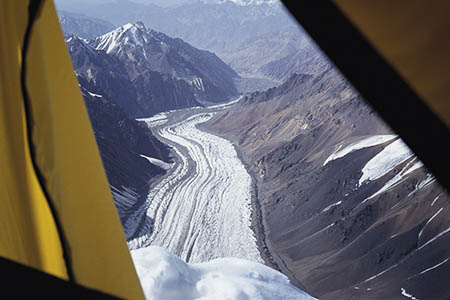
On the north ridge K2, looking out of the tent door at 7500m with a 2000m drop to the K2 Glacier. The Shaksgam Valley, China, is in the distance. © Alan Hinkes
“K2 meant a lot at the time. Actually Shishapangma meant a lot too because it was the first one. I did it Alpine style and with the great Kukuczka.
“But K2 meant a lot because I never had a plan to do all 14.
“I saw K2 and thought: that is the mountain to do; it’s nearly as impressive as Roseberry Topping.
“So I spent three years of my life trying to get up K2. You could say I dedicated three years of my life to K2, so that did seem fantastic when I climbed K2 and got to the top.
“And then I had already planned two other 8,000ers after that in the Karakorum, GI and GII and then I got invited to go to Everest. The thing turned into a bit of a whirlwind. I got invited to Everest as a cameraman and a guide so I did that, did a couple of other 8,000ers and at that point I ended up with eight, just over half way. That’s when I decided to do all 14.
“After that, it was just carrying on doing them. I suppose the last one, Kanchenjunga was memorable as well, because not only was it the last, it was a massive effort. It was a near-death experience which you’ll have to read about in the book.
“If my last one had just been: oh, that was handy; I did that, there wasn’t much of a drama there, that would have been it.
“I would have done all 14 but as it happened it was a grand finale; it was a major epic at the end.
“So that sticks out as well.”
All of which sounds like a compelling reason for people to get their hands on the £25 tome when it hits the shops in October.
He feels there could be another book in him, but he enjoys the hills, mountains and crags too much at the moment.
“I could start the next book now. I could do a biog.
“But I don’t think I want to do another book at the moment; I want to go out and play.
“A lot of mountaineers do biogs, but why do people want to read about my life?
“I had three goes at K2 and I’ve only done 2,000 words on that, so you could do a whole book on K2.
“I could do an autobiog because there are lots of other things I could talk about, from being avalanched in the Lake District and climbing all over the world and this book is only about my 14 8,000ers; it’s not about 40 or 50 expeds I’ve done and the climbing I’ve done in Scotland and the Lakes and Yorkshire.”
So for now, you’re more likely to see Alan Hinkes striding across Cross Fell or ice-climbing on the Scafell range.
The 192-page hardback 8000 Metres – Climbing the World’s Highest Mountains will be published by Cicerone in October.
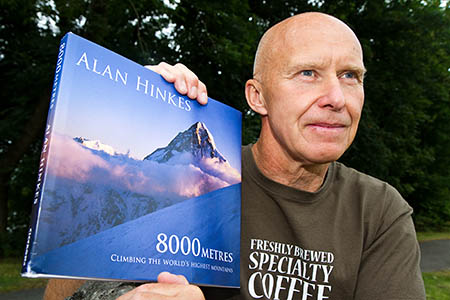
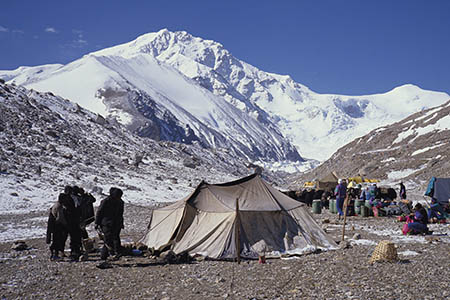
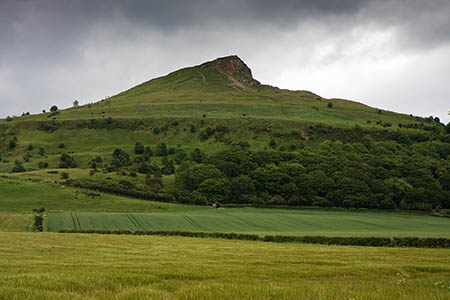
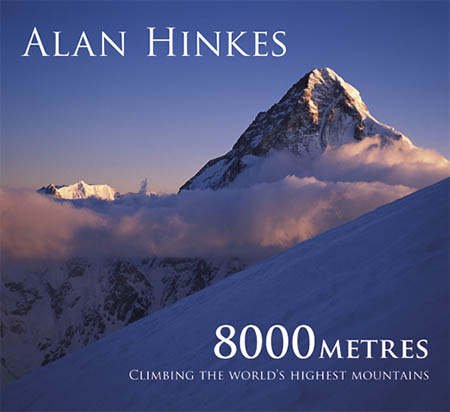
Robin Walker
23 November 2013Alan are you giving any lectures in the London area. I missed the RGS talk